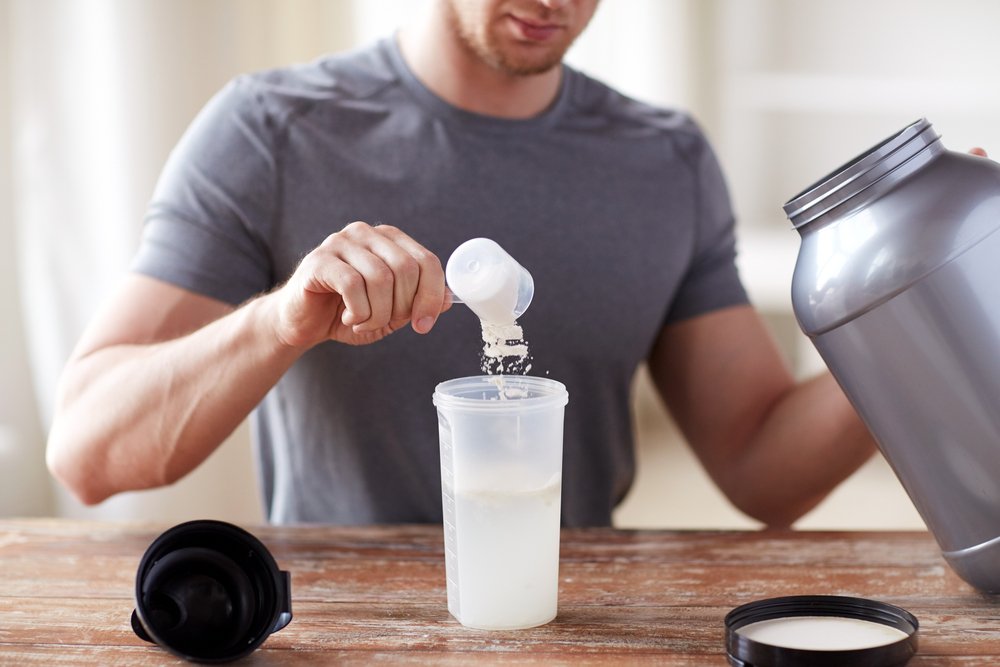Calcium Caseinate has become one of the most widely used supplements in recent years, amazingly both for building muscle and for losing weight. Derived from fresh skimmed milk, it’s effectively a spray-dried milk protein that’s instantised for easy mixing. It’s widely praised for containing high levels of amino acids and it’s even theorised they could help with the digestion of other amino acids since it prolongs the amount of time they are in the intestinal tract for.
Calcium Caseinate And Fat Loss
It’s widely known that high protein foods increase the feeling of being full (Kristin Vandewater et al, 1996) but researchers in Switzerland decided to take this one step further and set out to determine exactly which type of protein was best for producing a feeling of satiety. Rania Abou-Samra et al (2011) took a group of 32 male subjects and randomly assigned them to consume 20g of casein, whey or pea protein 30 minutes before eating a meal and their appetite and desire to eat that meal was then subjectively measured. The study concluded that the ‘casein and pea protein showed a stronger effect on food intake compared to whey when consumed as a preload’ meaning both casein and pea protein were considered to make you feel fuller for longer compared to whey protein. These results seem to be supported by researchers from the Nutrition and Toxicology Research Institute at Maastricht University who specifically measured test subjects appetite after they were fed a diet where; (1) 10% of their total daily calorie intake was made up of casein and (2) 25% of their total daily calorie intake was made up of casein. Ananda Hochstenbach-Waelen et al (2009) concluded ‘satiety was 33% higher in group 2 compared to those in group 1’ and that a higher protein diet (in the case of this study casein) was more beneficial to body weight management.
Calcium Caseinate And Muscle Mass
Casein’s mainly used by bodybuilders and strength athletes before bed to ensure whilst they are sleeping for 8 hours their muscles are being slowly fed amino acids. This, therefore, makes night time more anabolic and less catabolic and produces an environment within the body that is more conducive to building muscle. This is why casein is the preferred ‘night time’ protein compared to quicker absorbing proteins such as whey protein which would only keep your body ‘fuelled’ for the first 2 hours of your sleep. Also as well as being used before bed, some athletes also prefer to use casein immediately following training. Researchers at the University of Texas Medical Branch in America found that the ingestion of casein post workout resulted in a degree of protein synthesis (the process by which the muscles use protein to repair and regrow bigger) equal to that of whey protein which is more traditionally used, despite different patterns of blood amino acid responses. So whilst whey protein is still predominantly used post workout because of how quickly it’s absorbed, studies like that conducted at the University of Texas Medical Branch do offer an interesting alternative to the conventional school of thought.
References:
- Stephane Pinaud, Corine Nielsen-Moennoz and Lionel Bovetto (2011) ‘Protein choices targeting thermogenesis and metabolism’ 2011 American Society for Nutrition
- Ananda Hochstenbach-Waelen, Margriet AB Veldhorst, Arie G Nieuwenhuizen, Margriet S Westerterp-Plantenga and Klaas R Westerterp (2009) ‘Comparison of 2 diets with either 25% or 10% of energy as casein on energy expenditure, substrate balance, and appetite profile’ The American Journal Of Clinical Nutrition, March 2009 vol. 89 no. 3 831-838
- Kristin Vandewater and Zata Vickers (1996) ‘Higher-protein foods produce greater sensory-specific satiety’ Physiology & Behavior, Volume 59, Issue 3, March 1996, Pages 579–583
- Rania Abou-Samra, Lian Keersmaekers, Dino Brienza, Rajat Mukherjee and Katherine Mace (2011) ‘Effect of different protein sources on satiation and short-term satiety when consumed as a starter’ Nutritional Journal, Volume 10
- Tipton KD, Elliott TA, Cree MG, Wolf SE, Sanford AP and Wolfe RR (2004) ‘Ingestion of casein and whey proteins result in muscle anabolism after resistance exercise.’ Medicine and Science in Sports and Exercise, 2004 Dec;36(12):2073-81.








No Comments yet!